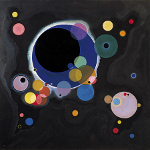The M/EEG inverse problem is, in general, ill-posed. In particular, it means that measurements and forward operator alone are not sufficient to find a unique solution. Thus, additional a priori hypotheses about the cortical activity are needed to constrain the solution. The most of the state-of-art inverse methods aim to reconstruct a single cortical source configuration which explains the data. However, because of the ill-posedness of the problem, it is very likely that other spatially distinct source configurations could explain the data equivalently well as the identified solution. We propose a new approach for M/EEG source reconstruction using clustering of the cortical surface. It is based on the idea that it is better to have several possible candidates to a solution, with the true one among them, than to have a single, but possibly false solution. That is why our method provides several candidate solutions. These candidates are different in term of their extent and/or positions on the cortex, but fit the data with similar accuracy. We validate our method on simulated and real MEG data.
By speaker > Maksymenko Kostiantyn
CLUB-MUSIC : a novel algorithm to provide a family of plausible solutions to the M/EEG inverse problem
1 : Inria Sophia Antipolis - Méditerranée
(CRISAM)
-
Website
* : Corresponding author
Institut National de Recherche en Informatique et en Automatique
2004 route des Lucioles BP 93 06902 Sophia Antipolis -
France
| Online user: 61 | RSS Feed |

|

 PDF version
PDF version